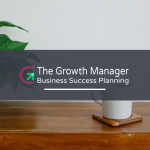Have you ever wondered what lies beneath the surface of your business expenses? Beyond the obvious line items—salaries, rent, and raw materials—there exists a shadow realm of costs that often eludes our attention. These are the hidden costs, quietly shaping the fate of your pricing strategy.
 The Enigma of Hidden Cost
The Enigma of Hidden Cost
Behind every successful business is a balance sheet in which every expenditure, visible or invisible, plays an important role. Consider releasing a product or service without addressing unseen costs—those seemingly small expenses that quietly eat away at your profitability. This is where the path to strategic pricing begins.
Imagine your business as an iceberg—the visible tip represents the costs you readily account for, while the submerged bulk conceals a host of hidden fees. These elusive costs can emerge unexpectedly, like a stealthy predator stalking its prey.
From unexpected maintenance fees to time-consuming customer service, even the most carefully crafted pricing model can be distorted if these are overlooked or ignored entirely. This can compromise your resources and hinder your expansion.
Let’s embark on a journey of discovery together. Buckle up as we explore how identifying these costs and integrating them into your pricing strategy can not only ensure profitability but also move your business closer to its growth goals.
Identifying Hidden Costs: Unveiling the Veiled Expenses
Start by demystifying these hidden expenses. Most often, they are hidden behind more obvious operating expenses. These can include:
- Unexpected maintenance fees or other expenditures.
- Overlooked administrative costs.
- Time-intensive customer support efforts.
All of which subtly impact your business’s bottom line.
To get the right price, you need to do thorough research that goes beyond budget. This includes identifying what can compromise your pricing model. By highlighting these often-overlooked financial commitments, you can anticipate and mitigate risks, ensuring your pricing is aligned with your profitability and growth goals.
The Impact on Pricing Accuracy: Ensuring Precision in Pricing Models
Neglecting hidden expenses can have major implications for the accuracy of your pricing. These expenses, often concealed beneath the surface of day-to-day operations, can cause significant disparities between expected and actual spending.
Such discrepancies undermine profitability while also impeding strategic decision-making. Let’s explore this uncharted territory further and hunt for the wasted dollars hiding in plain sight.
The Whisper of Unseen Expenses
1. Defining Hidden Costs:
- It encompasses more than mere financial transactions. They include intangibles like time lost due to inefficiencies, employee turnover, and missed opportunities.
- Consider the late-night brainstorming sessions, the coffee-fuelled overtime, and the wear and tear on equipment—all part of the hidden cost tapestry.
2. The Mirage of Profitability:
- Picture this: You set a product price based on visible expenses alone. But what about the electricity bill for that extra hour of production? Or the marketing campaign that didn’t yield immediate results?
- Neglecting it distorts your perception of profitability. It’s like balancing on a tightrope blindfolded.
3. The Quest for Precision:
- Strategic pricing demands precision. It’s not a guessing game; it’s a calculated dance between costs, value, and market dynamics.
- By acknowledging them, you gain clarity. You can adjust your pricing strategy with surgical precision, ensuring every dollar invested reaps rewards.
By meticulously identifying and integrating all expenses, including those hidden, into your pricing model, you can achieve greater precision. This approach enables more informed pricing decisions that align with both short-term financial goals and long-term growth strategies.
In the pursuit of sustainable growth, a nuanced understanding of your expenses is indispensable. Those that are hidden that you discover aren’t your foes. But when you unravel them, they can be critical in paving the way for growth and:
- Innovation: They can reveal inefficiencies ripe for innovation. Streamline your processes, automate tasks, and watch as your bottom line flourishes.
- Customer Trust: Transparent pricing builds trust. Customers appreciate honesty, paving the way for lasting relationships.
- Strategic Agility: Armed with knowledge, you can adapt swiftly. Even with market shifts and unexpected expenses, your prices flex without breaking.
Strategic Pricing for Sustainable Growth: Balancing Profitability and Expansion
Price is one of the most adaptable aspects of the marketing mix, which has a direct impact on a company’s profitability and cost-effectiveness. However, achieving sustainable business growth hinges on more than just revenue generation.
It needs a meticulous approach to this strategy, considering all facets of operational expenses. By integrating these costs into your pricing model, you will be able to strike a delicate balance between profitability and expansion.
It enables you to make informed decisions that prioritise both short-term financial gains and long-term scalability. Consider the scenario where a business accurately factors in all costs, such as regulatory compliance or unforeseen fluctuations in supply chain expenses. Such foresight not only fortifies profit margins but also positions the business for an agile response to market changes.
In essence, strategic pricing goes beyond setting numbers; it entails a strategic mindset that anticipates challenges and seizes opportunities.
A well-calibrated strategy plays a crucial role in balancing profitability and expansion goals by ensuring that pricing accurately reflects all operational costs, including hidden expenses. This approach not only safeguards profit margins but also provides the financial foundation necessary for sustainable growth and strategic investments in business expansion.
Transparency and Customer Trust: Building Relationships through Clear Pricing
By openly disclosing costs, businesses can foster transparency in their pricing that resonates well with their customers. This practice enhances customer relationships and cultivates a reputation for honesty and reliability.
Transparent pricing practices require clarity and consistency, involving outlining structures, including costs, and being upfront about potential additional costs, to mitigate customer uncertainty and align with ethical business practices.
Imagine the impact of a business that openly discusses all aspects of its pricing, from initial costs to ongoing maintenance fees. It can instil confidence and empower customers to make informed decisions based on complete information.
Businesses can effectively communicate pricing strategies to customers by being transparent, emphasising value, educating, offering segmented pricing, comparing with competitors, sharing testimonials, personalising communication, and maintaining ongoing communication.
Conclusion: The Path Forward
Uncovering what’s hidden is not just a matter of financial understanding, it’s about laying a strong foundation for the strategic growth of the company. By carefully identifying and incorporating these costs into your pricing strategy, you can ensure your business’s profitability and drive expansion opportunities. This approach not only protects against financial surprises but also allows the company to participate seamlessly in emerging trends and market opportunities.
Remember that a well-calibrated pricing strategy isn’t static, it evolves with your business. Embrace the practice of ongoing expense review and adjustment to stay responsive to market dynamics and customer needs. By doing so, you pave the way for sustained success and resilience in an ever-changing business landscape.
Take the first step today. Conduct a thorough review of your business expenses, including hidden costs, to align your prices with growth goals.
Explore how The Growth Manager can support your journey with tailored strategies and resources designed to elevate your business by discovering our Sales Mastery Mentoring Pack to learn more and start optimising your price and sales strategy for sustainable business growth.





